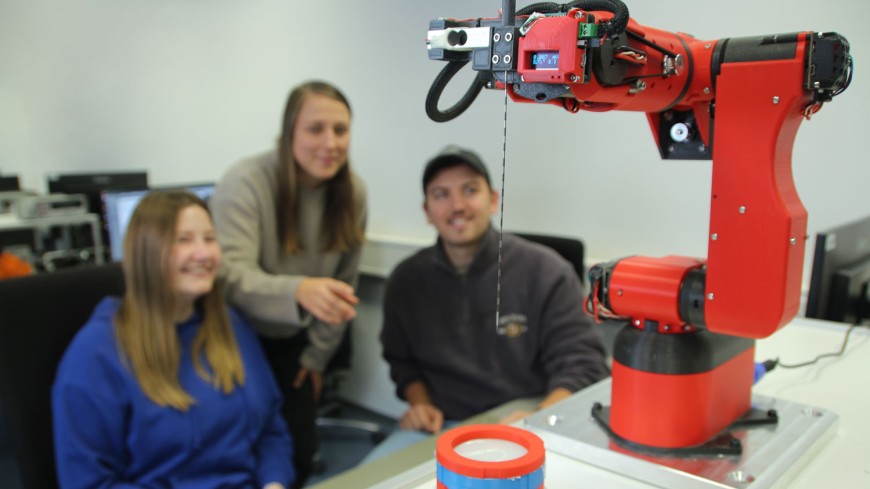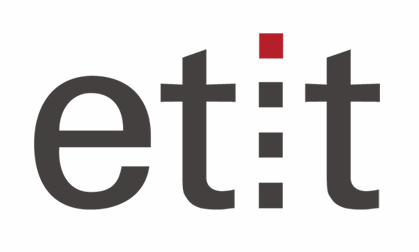Experience medical technology
4th semester etit students feel tumours with robotic arms
2023/11/23 by Sven Suppelt / sas
As part of the Measurement Technology Lab at Professor Mario Kupnik's MUST Laboratory, students carry out a liver biopsy on a tissue phantom – using a robotic arm. This was specially developed together with students. The Lab is an essential part of the degree programme in which the theory learned is put into practice.

Since the first use of a medical robot in 1991 for a transurethral resection of the prostate, robotic systems have become established in medical technology. Nowadays, medical robots are very versatile. What they all have in common is that they are designed to provide medical support to doctors without replacing them.
Due to the high complexity of these systems, practical trials have rarely been part of teaching in the past. In close collaboration with the Institute for Diagnostic and Interventional Radiology (DIR) at Goethe University Frankfurt (headed by Professor Thomas Vogl), the Laboratory of Measurement and Sensor Technology (MUST, headed by Professor Mario Kupnik) has developed a practical course in which both the specialist vocabulary and the basics of robotics are taught. “Helene", a robotic arm developed together with students, is being used. The project was supported by the RMU Teaching Initiative Fund.
Interdisciplinarity within medical engineering
The experiment focuses on the liver biopsy: the doctor takes a tissue sample from a tumour (biopsy) during the puncture. This scenario is perfect for a teaching experiment due to the large differences in density of the tissue layers under consideration.
The DIR Institute provided relevant clinical pictures and operation-specific scenarios for robot-assisted interventions, the definition of tissue properties and CT data sets/3D scans of the tissue to be examined. At etit, Helene and the control software were developed at the MUST Laboratory, a tissue phantom made of silicone was created and various control algorithms for positioning the needle in the tissue phantom were designed.
The students' task is to programme the sequence of movements of the robot arm using Python and to perform the needle puncture. Once the needle has been successfully inserted, the resulting measurement data must be interpreted. Precisely because the measurement data is not produced synthetically and the tumours of all tissue phantoms do not have the same depth, students learn how to handle real measurement data.
Honoured with the Athena Prize for Good Teaching
This year, the Lab was honoured with the Athena Prize for Good Teaching. It will be offered again in the summer semester 2024.
Always up-to-date with exciting news from the etit campus: Follow us on Instagram!
Recommended external content
We have selected external content from Instagram for you and would like to show it to you right here. To do this, you must reveal it with one click. You can hide the external content at any time with another click.
I agree to external content from X being shown to me. This may result in personal data being transmitted to third-party platforms. You can find more information in our Privacy Policy.



